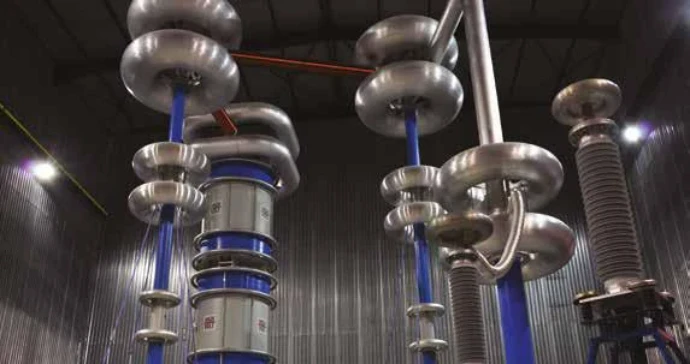In the intricate world of high-voltage engineering, where the quest for efficiency and reliability is paramount, grading rings emerge as corona rings unsung heroes. These unassuming components play a crucial role in optimizing electric fields, mitigating the risks of corona discharge, and enhancing the overall efficiency of high-voltage systems. This exploration delves into the essentials of grading rings, providing a foundational understanding of their principles and the critical role they play in achieving high-voltage efficiency.
The Basics: What Are Grading Rings?
Grading rings, also known as corona rings or anti-corona rings, are conductive components strategically placed on high-voltage conductors. Their primary function is to shape and manage electric fields, preventing the onset of corona discharge—a phenomenon that can lead to energy losses and potential damage to equipment.
Electric Field Management: Precision in Distribution
At the core of grading rings’ functionality is their ability to manage electric fields with precision. As voltage levels increase, the risk of corona discharge rises. Grading rings are designed to optimize electric field distributions, ensuring a more uniform field and reducing the likelihood of ionization in the surrounding air. This precision in electric field management is essential for maintaining stability and efficiency in high-voltage systems.
Mitigating Corona Discharge: Proactive Prevention
Corona discharge occurs when the electric field surrounding a conductor is strong enough to ionize the surrounding air, leading to visible discharge and energy losses. Grading rings take a proactive approach to mitigate corona discharge by evenly distributing the electric field along the conductor. This preventative measure ensures that the energy intended for transmission reaches its destination with minimal losses, contributing to overall system efficiency.
Overhead Transmission Lines: Key Applications
Grading rings find prominent applications in overhead transmission lines, where the challenges of corona discharge are particularly pronounced. Placed strategically along these lines, grading rings contribute to stabilizing electric fields and preventing corona discharge. This is crucial for efficient power delivery over vast distances, making grading rings integral components in maintaining the reliability of overhead transmission systems.
Insulator Protection: Extending Lifespan
Beyond their role in corona discharge prevention, grading rings quietly contribute to insulator protection. By preventing corona discharge-induced damage, grading rings extend the service life of insulators. This not only grading rings ensures prolonged efficiency but also reduces the need for frequent maintenance activities, bolstering the overall reliability of high-voltage systems.
Computational Simulations: Fine-Tuning for Optimal Performance
Advancements in computational simulations play a significant role in fine-tuning the design and placement of grading rings. Engineers use sophisticated modeling techniques to simulate electric field dynamics, predict corona behavior, and optimize the configuration of grading rings for optimal performance. This scientific approach ensures that grading rings are finely tuned solutions tailored for maximum efficiency in real-world high-voltage scenarios.
Environmental Adaptability: Operating in Diverse Conditions
Grading rings showcase adaptability by operating in diverse environmental conditions. They are designed to withstand extreme temperatures, humidity, and pollution, ensuring uninterrupted efficiency in a variety of scenarios. This adaptability contributes to the overall robustness and reliability of high-voltage systems, highlighting the versatility of grading rings in challenging environments.
Versatility in Component Efficiency: Beyond Overhead Lines
While overhead transmission lines are a primary application, grading rings showcase versatility in contributing to the efficiency of various high-voltage components. Their influence extends to transformers, circuit breakers, and switchgear, ensuring consistent electric field management and enhancing the overall reliability of diverse elements within the electrical infrastructure.
Precision Engineering: The Key to Grading Ring Effectiveness
Grading rings epitomize precision engineering. Meticulous design, material science advancements, and computational simulations work together to create components that are finely tuned for optimal performance. This commitment to precision engineering positions grading rings as essential tools in the pursuit of high-voltage efficiency.
Future Prospects: Innovations Shaping Efficiency
Looking ahead, grading rings hold the promise of further innovations that will shape the landscape of high-voltage efficiency. Ongoing research and development may lead to advancements in materials, designs, and applications, reinforcing the crucial role of grading rings in optimizing power transmission systems.
Conclusion: Grading Rings as Efficiency Champions
In conclusion, grading rings emerge as efficiency champions in the domain of high-voltage engineering. Their fundamental role in shaping electric fields, mitigating corona discharge, and contributing to the overall reliability of electrical systems underscores their significance. As foundational components in achieving high-voltage efficiency, grading rings exemplify the marriage of engineering principles and practical applications in the pursuit of a reliable and efficient power transmission infrastructure.







